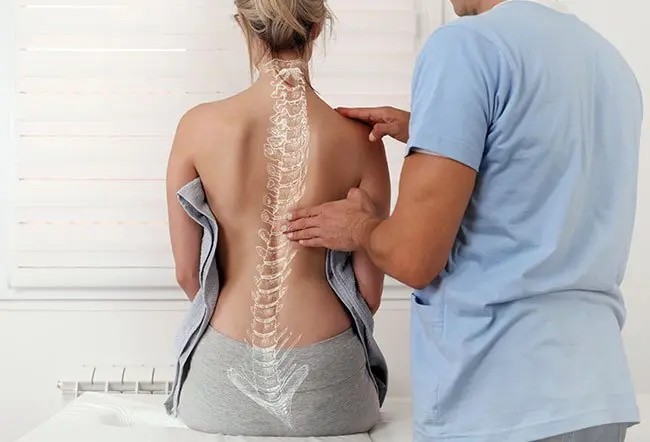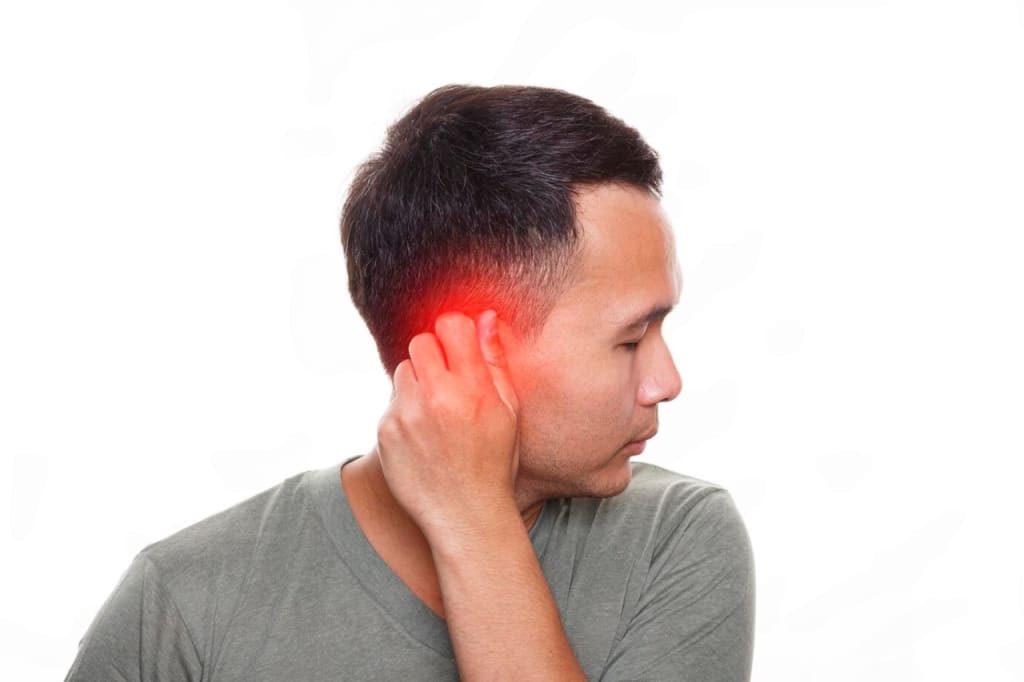Whiplash is a common neck injury that typically occurs when the head is suddenly jerked forward and backward, often in a car accident. It can lead to a variety of symptoms such as neck pain, stiffness, headaches, dizziness, and difficulty moving the neck. While whiplash injuries are commonly associated with rear-end collisions, they can occur in any situation where the neck is subjected to sudden, forceful movements.
Fortunately, there are several steps you can take to reduce your risk of experiencing whiplash. In this blog post, we’ll explore the causes of whiplash, its symptoms, and practical tips for preventing this injury through safe driving and awareness. By understanding the mechanisms behind whiplash and adopting precautionary measures, you can protect yourself and others on the road.
Understanding Whiplash: What Is It and How Does It Happen?
Whiplash occurs when a sudden force causes the neck to jerk forward and then snap backward, stretching and damaging the muscles, tendons, and ligaments in the neck. The rapid movement can cause tears or strains in the soft tissues of the cervical spine, leading to pain, swelling, and stiffness.
Whiplash is most commonly associated with rear-end car collisions. In these accidents, the impact causes the vehicle to suddenly accelerate, which can cause the head to snap forward and backward. While whiplash in Delray Beach can occur in other types of accidents, such as side-impact crashes or sports injuries, rear-end collisions are the most common cause.
The severity of whiplash injuries can vary. Some individuals experience mild symptoms that improve within a few days, while others may experience long-lasting or chronic pain. In severe cases, whiplash can lead to nerve damage, reduced mobility, or chronic headaches.
Recognizing the Symptoms of Whiplash
The symptoms of whiplash can appear immediately after the injury or may take hours or even days to develop. Some of the most common symptoms include:
- Neck Pain and Stiffness: This is the hallmark symptom of whiplash. The neck may feel sore or stiff, making it difficult to move the head.
- Headaches: Pain at the base of the skull can lead to headaches, which can radiate to the forehead or the temples.
- Dizziness: Some individuals experience dizziness or a feeling of lightheadedness.
- Shoulder or Upper Back Pain: The muscles and ligaments in the upper back may also be affected, leading to discomfort in the shoulders or upper back.
- Numbness or Tingling: In some cases, whiplash may cause tingling or numbness in the arms or hands, indicating nerve irritation.
- Difficulty Sleeping: Pain and discomfort may make it hard to find a comfortable position for sleeping.
- Jaw Pain: The force of the whiplash can also affect the jaw, causing discomfort or even temporomandibular joint (TMJ) issues.
If you experience any of these symptoms after a car accident or other trauma, it’s essential to seek medical attention. A healthcare professional at Alter Chiropractic can assess your condition and recommend treatment options to help manage the symptoms and promote healing.
Tips for Preventing Whiplash: Safe Driving Practices
While some car accidents are unavoidable, there are several steps drivers and passengers can take to reduce their risk of whiplash and other neck injuries. The key is to ensure that your body is properly supported during any impact, which includes using your vehicle’s safety features and maintaining good posture while driving.
1. Ensure Proper Headrest Position
The headrest is one of the most important safety features in preventing whiplash. If the headrest is too low or too far away from your head, it can fail to support your neck in the event of a collision, increasing the risk of whiplash injury. To maximize protection, follow these guidelines:
- Adjust the headrest so that the top of the headrest is aligned with the top of your head.
- Position the headrest so that it is as close to the back of your head as possible. This minimizes the distance your head can move during a collision.
If you drive a newer vehicle, take advantage of the advanced features in many headrests that are designed to move forward in the event of an accident to help prevent whiplash.
2. Always Wear Your Seatbelt
Wearing a seatbelt is one of the most effective ways to protect yourself in a car accident. Seatbelts help distribute the force of the impact across your chest, hips, and shoulders, reducing the likelihood of severe injury. Additionally, seatbelts prevent you from being thrown forward or sideways in the vehicle, which can contribute to whiplash and other injuries.
When wearing a seatbelt, make sure it is positioned correctly:
- The lap belt should lie snugly across your hips, not your stomach.
- The shoulder belt should cross over your shoulder and chest, not your neck or face.
3. Maintain Proper Posture While Driving
Proper posture while driving plays an important role in reducing the risk of injury in the event of an accident. If you sit too far forward or slouched in your seat, your body is more vulnerable to sudden movements that could cause whiplash. To maintain a healthy driving posture, consider the following tips:
- Sit with your back against the seat and your shoulders relaxed.
- Keep your knees level with your hips, and adjust the seat to allow for a slight bend in your knees.
- Ensure your feet can comfortably reach the pedals without straining your legs.
- Avoid leaning forward or slouching while driving. Keep your back straight, and adjust the seat to provide adequate lumbar support.
4. Avoid Rear-End Collisions
Rear-end collisions are the most common cause of whiplash injuries, so it’s important to take steps to avoid them. Some tips for reducing the risk of rear-end collisions include:
- Keep a safe distance from the vehicle in front of you. The recommended following distance is at least one car length for every 10 miles per hour you are driving.
- Avoid distractions while driving, such as texting or talking on the phone. Stay focused on the road at all times.
- Be aware of traffic conditions and adjust your speed accordingly. Slow down in heavy traffic or poor weather conditions, and always be prepared to stop suddenly.
5. Drive a Vehicle with Modern Safety Features
Many modern vehicles come equipped with advanced safety technologies that can help prevent accidents and reduce the severity of injuries, including whiplash. Some of the most effective features for whiplash prevention include:
- Active headrests: These headrests move forward in the event of a collision to reduce the strain on your neck.
- Anti-lock brakes (ABS): ABS helps prevent skidding and maintains steering control during emergency braking, reducing the likelihood of a collision.
- Lane-departure warning and collision warning systems: These systems alert you if you are drifting out of your lane or approaching another vehicle too quickly, giving you time to react.
- Adaptive cruise control: This feature maintains a safe distance between your vehicle and the one in front of you, adjusting your speed as needed.

Chiropractic Care: How Chiropractors Can Help Prevent and Treat Whiplash
While practicing safe driving habits is crucial, it’s also important to take proactive steps to protect your neck and spine. Chiropractors are healthcare professionals who specialize in the diagnosis, treatment, and prevention of musculoskeletal injuries, including those related to whiplash. They use non-invasive techniques to alleviate pain, restore function, and help patients achieve optimal spinal health.
1. Spinal Adjustments and Alignment
One of the primary treatments chiropractors at Alter Chiropractic in Delray Beachuse to treat whiplash is spinal manipulation, or adjustments. These adjustments involve gently manipulating the vertebrae of the spine to restore proper alignment. Misalignment in the spine, also known as subluxations, can occur due to the force of a car accident, contributing to pain, inflammation, and reduced mobility in the neck and upper back.
By restoring spinal alignment, chiropractors can help reduce muscle tension, alleviate pain, and promote faster healing. Regular spinal adjustments can also prevent long-term complications that might arise from whiplash, such as chronic neck pain, headaches, or reduced range of motion.
2. Soft Tissue Therapy
In addition to spinal adjustments, chiropractors often use soft tissue therapies to treat the muscles and ligaments affected by whiplash. These therapies include techniques such as:
- Massage therapy: Therapeutic massage helps to relax tense muscles, improve circulation, and reduce inflammation in the neck and upper back.
- Myofascial release: This technique targets the fascia, the connective tissue surrounding the muscles, to release tension and improve mobility.
- Trigger point therapy: Chiropractors use this technique to target specific points of muscle tightness or spasms that may be causing pain or discomfort.
By addressing soft tissue injuries, chiropractors can help patients recover from whiplash more quickly and effectively.
3. Rehabilitation and Exercise
Chiropractors often recommend specific exercises and stretches to help strengthen the muscles of the neck and upper back, improve posture, and enhance flexibility. These exercises can reduce the risk of future injuries and promote long-term spinal health.
Some common exercises for preventing whiplash and recovering from an injury include:
- Neck stretches: Gentle neck stretches can improve flexibility and reduce stiffness in the neck muscles.
- Strengthening exercises: Strengthening the muscles that support the spine can help prevent future injuries and improve posture.
- Posture correction exercises: Chiropractors may provide exercises that encourage good posture habits, which can reduce strain on the neck and upper back during daily activities.
4. Preventive Care and Wellness
Chiropractors are not just focused on treating injuries—they also emphasize preventive care to help patients maintain optimal health. Regular chiropractic checkups can help detect and correct any spinal misalignments or soft tissue issues before they lead to more serious injuries. Chiropractors can also offer lifestyle advice on proper posture, ergonomics, and stress management to help prevent whiplash and other musculoskeletal problems.
Chiropractic Care and Whiplash in Delray Beach
Whiplash is a common injury that can have serious long-term effects if not treated properly. However, by taking simple precautions—such as maintaining a safe driving distance, adjusting your seat and headrest, driving defensively, and avoiding aggressive driving—you can significantly reduce your risk of sustaining a whiplash injury.
If you are involved in a car accident, it’s important to seek medical attention even if you don’t initially experience pain. Early treatment can help prevent long-term complications and ensure that you recover as quickly as possible.
For professional assistance and expert care, contact Alter Chiropractic in Delray Beach at (561) 819-2225. Our team is dedicated to helping you stay safe and recover effectively.
By being mindful of your driving habits and staying aware of the risks, you can protect yourself and others on the road from whiplash and other injuries. Stay safe, and remember that prevention is the best form of protection.





